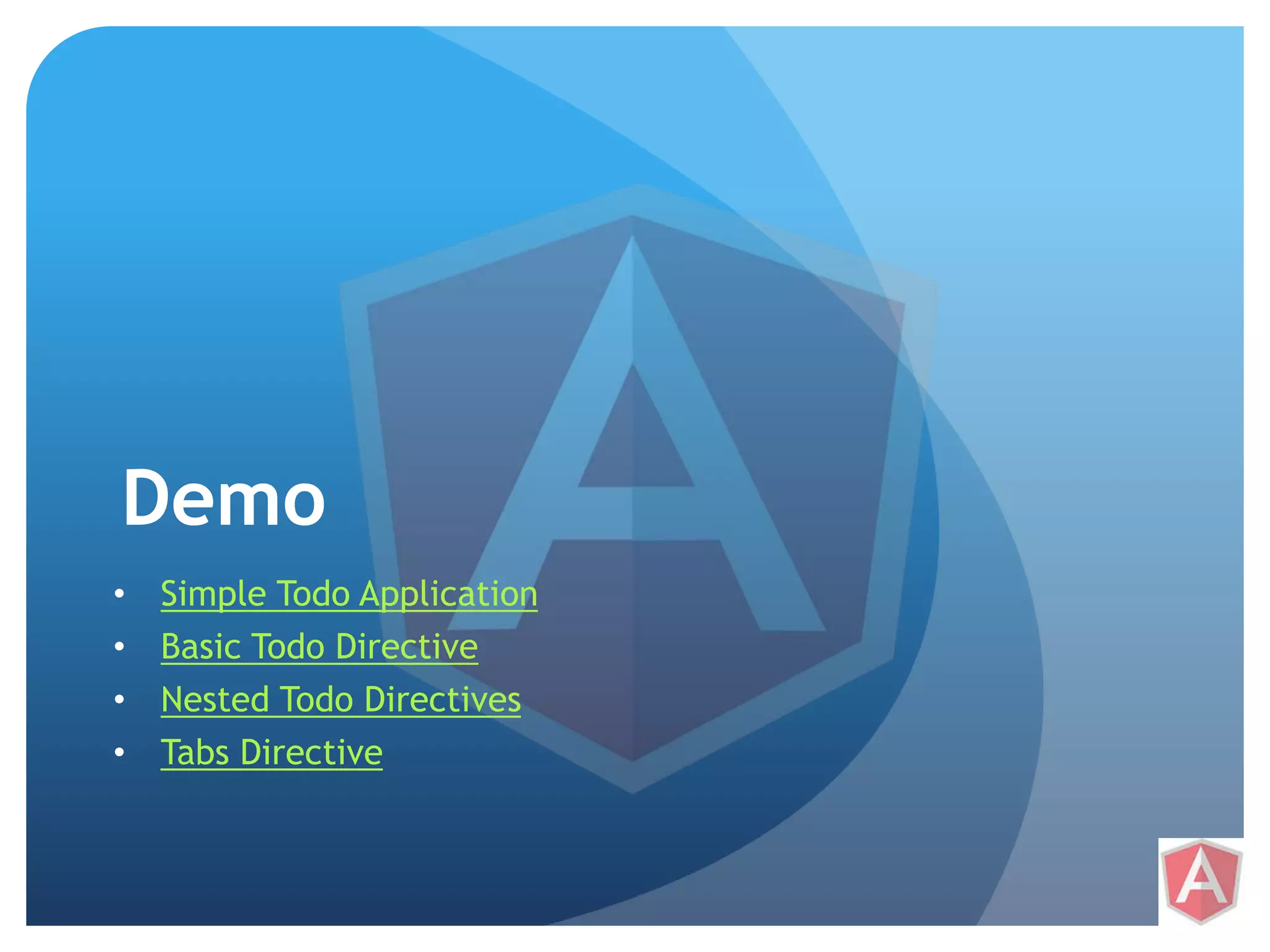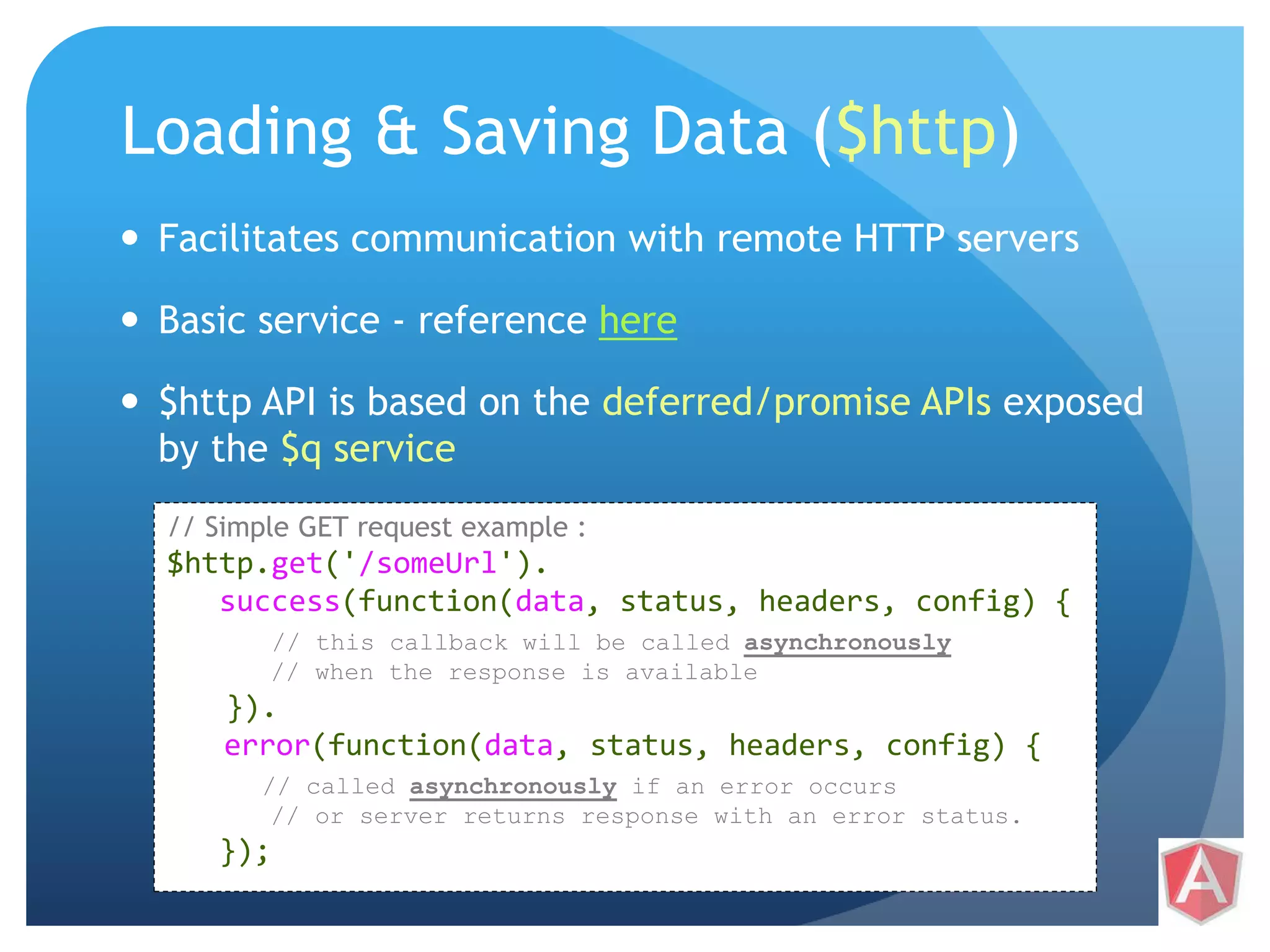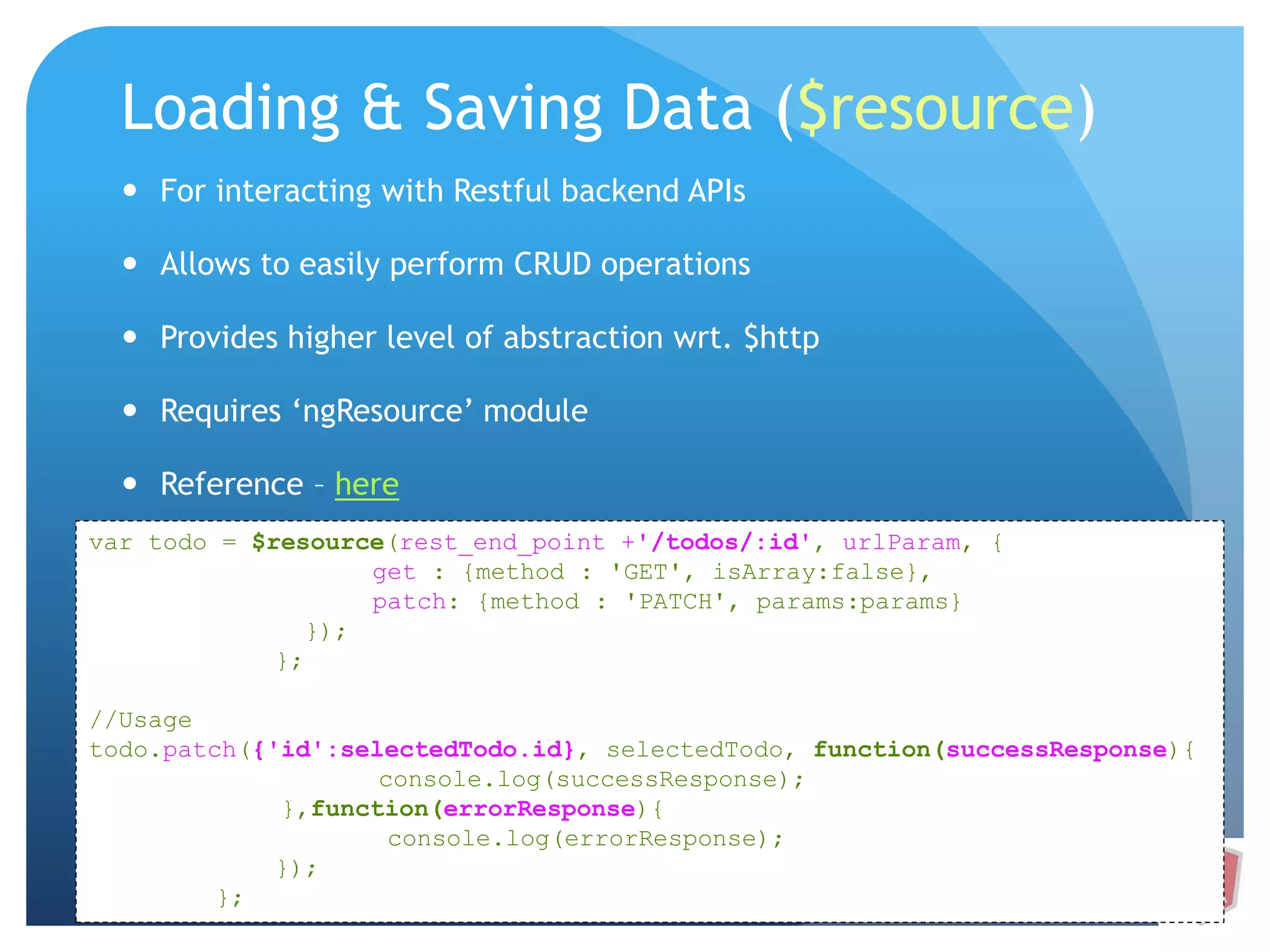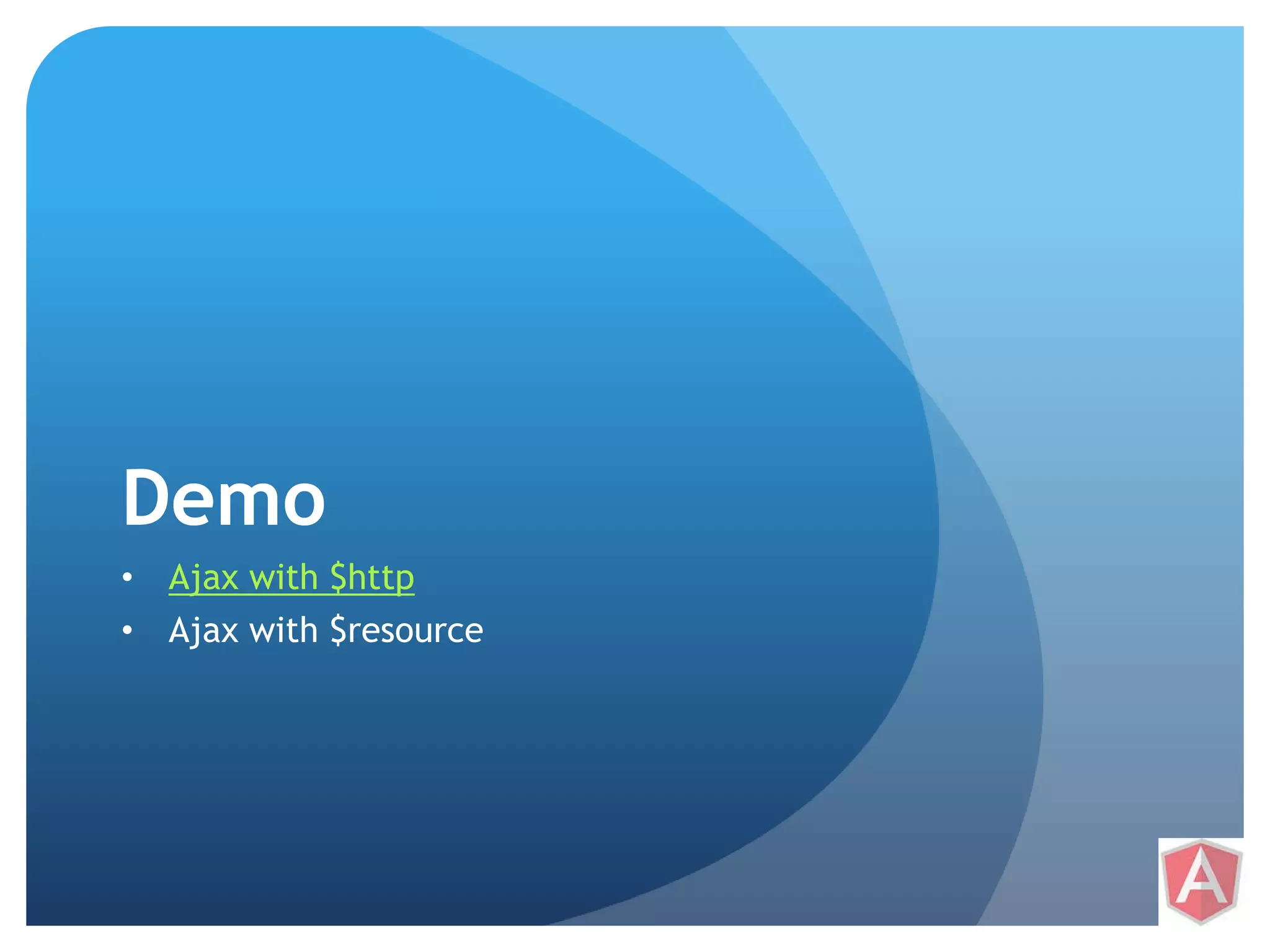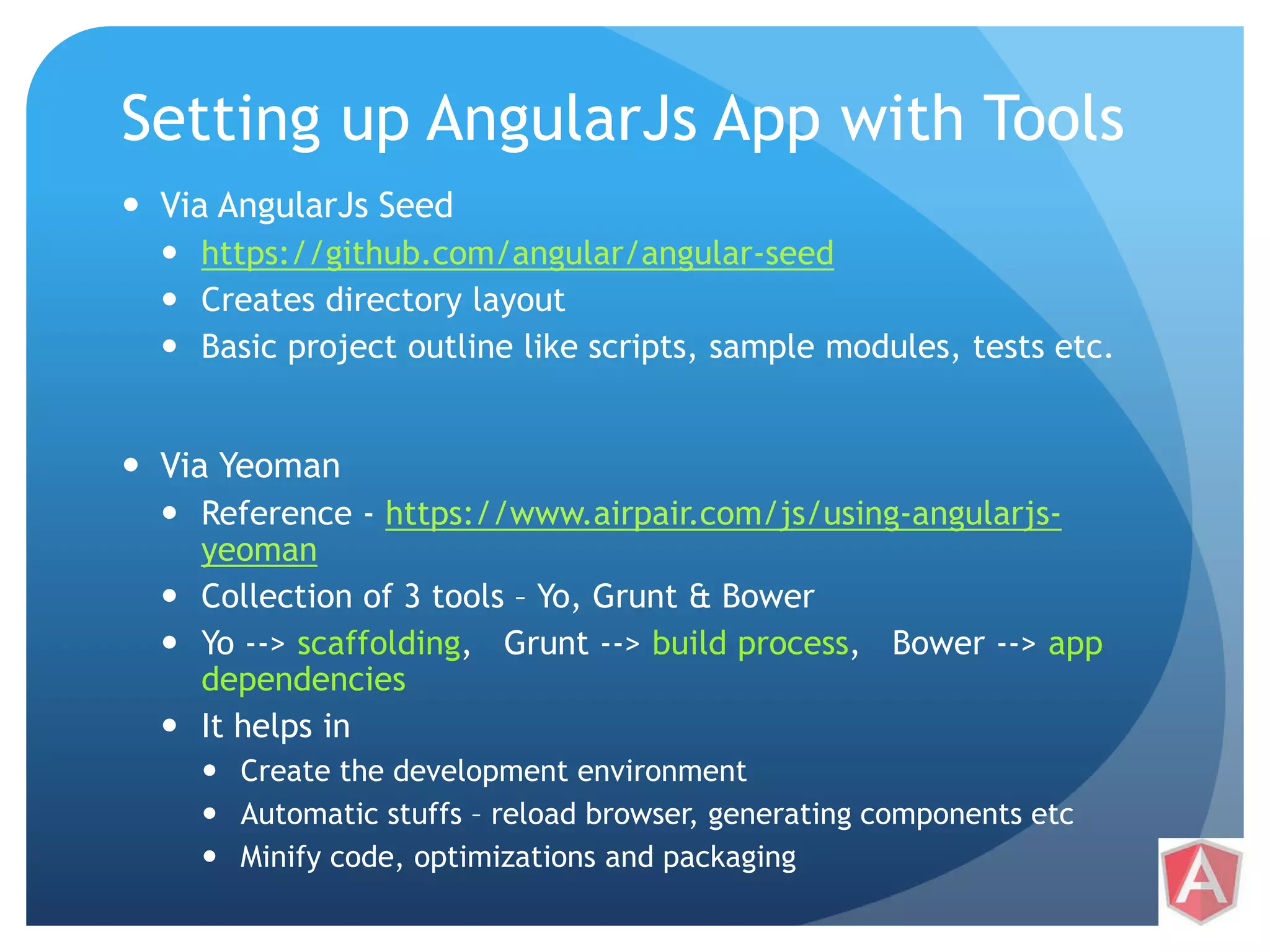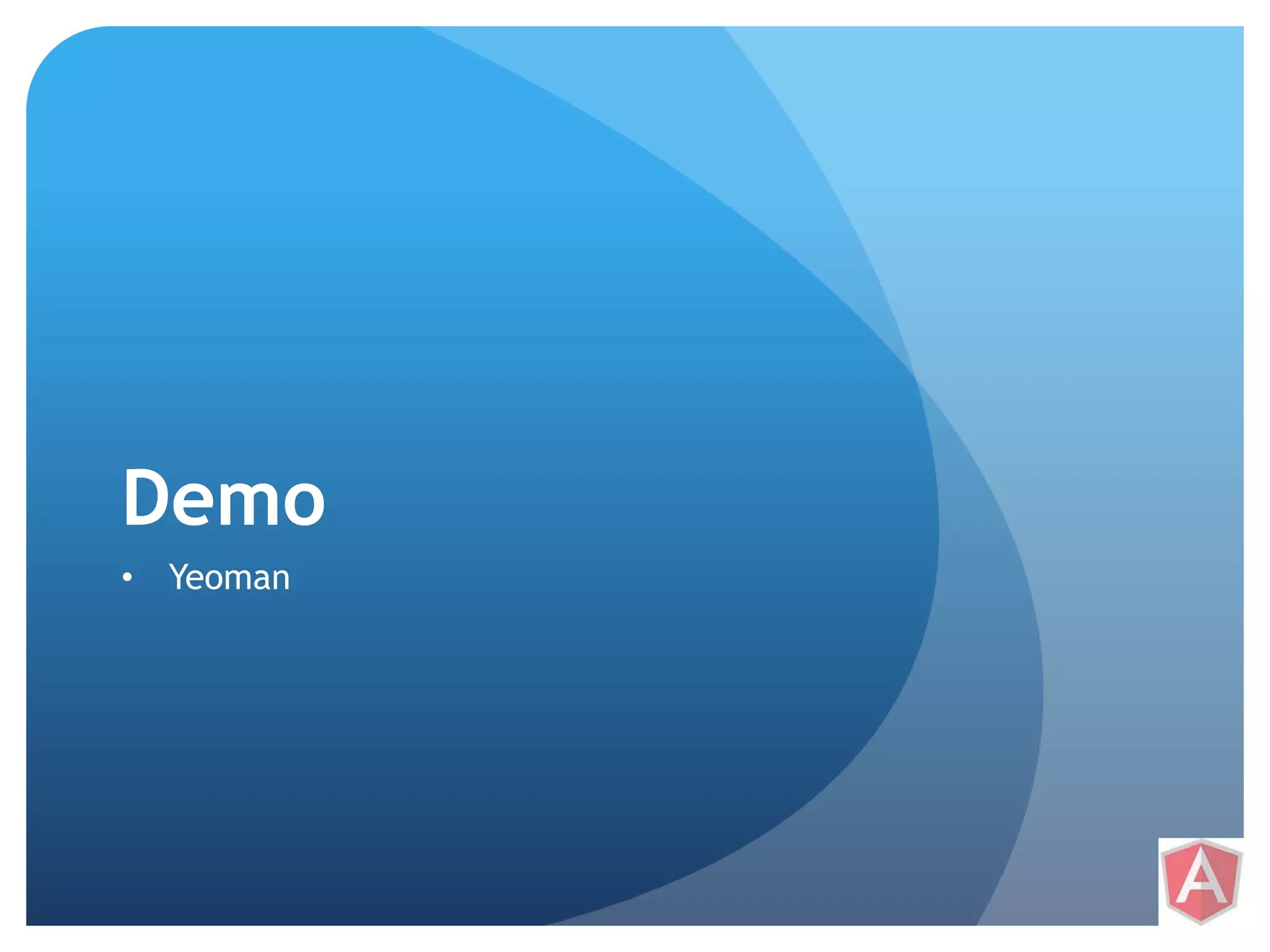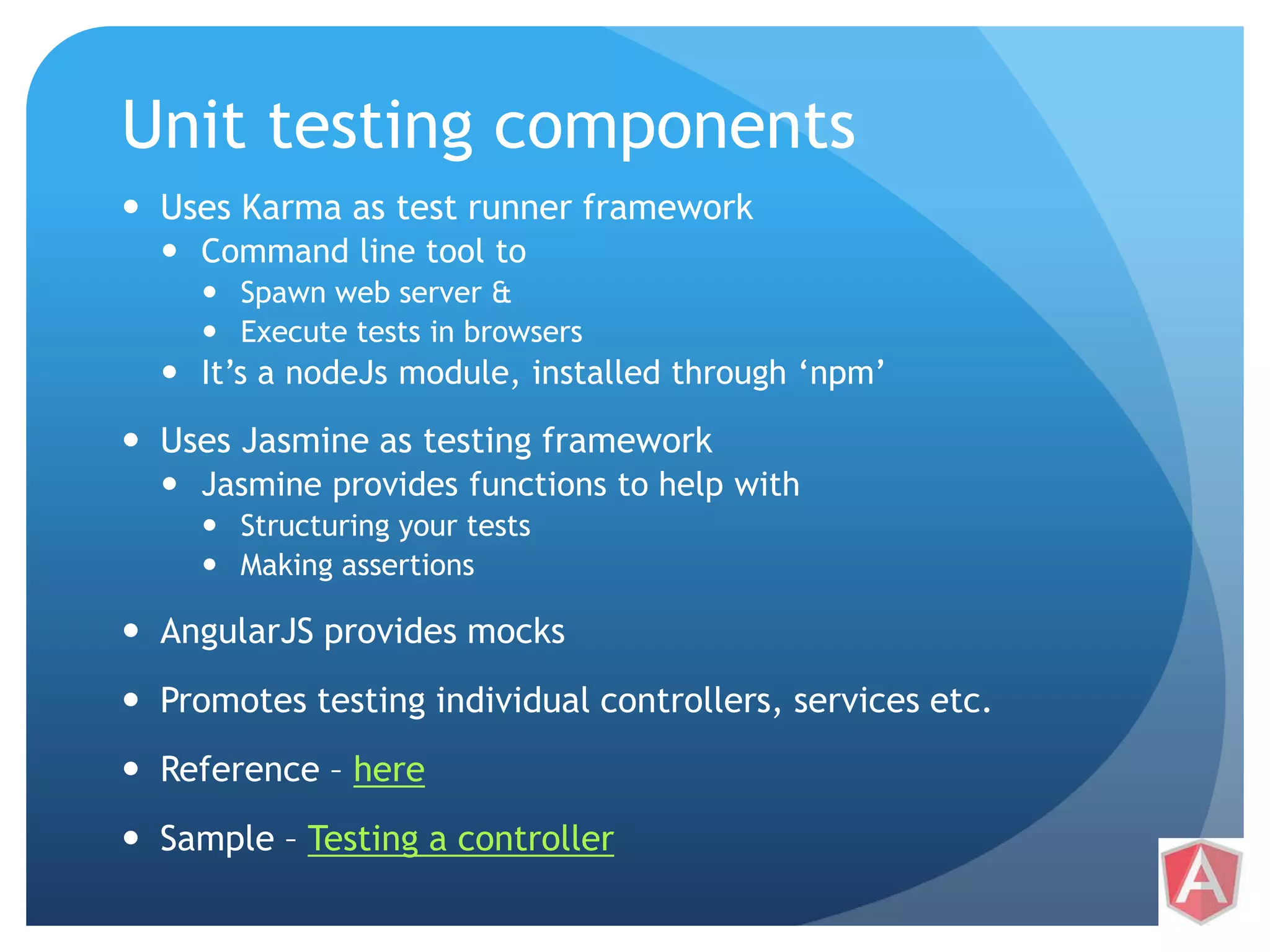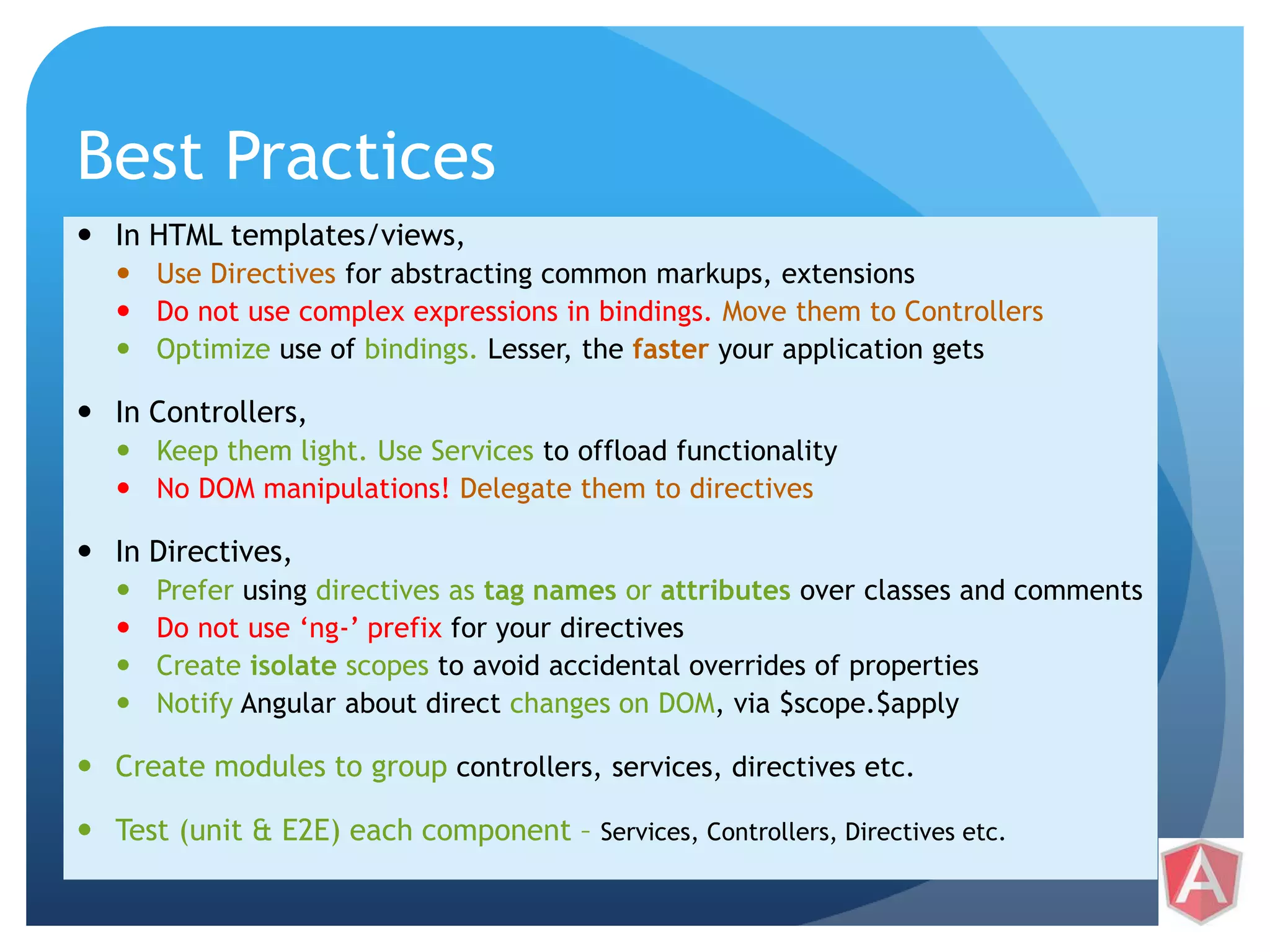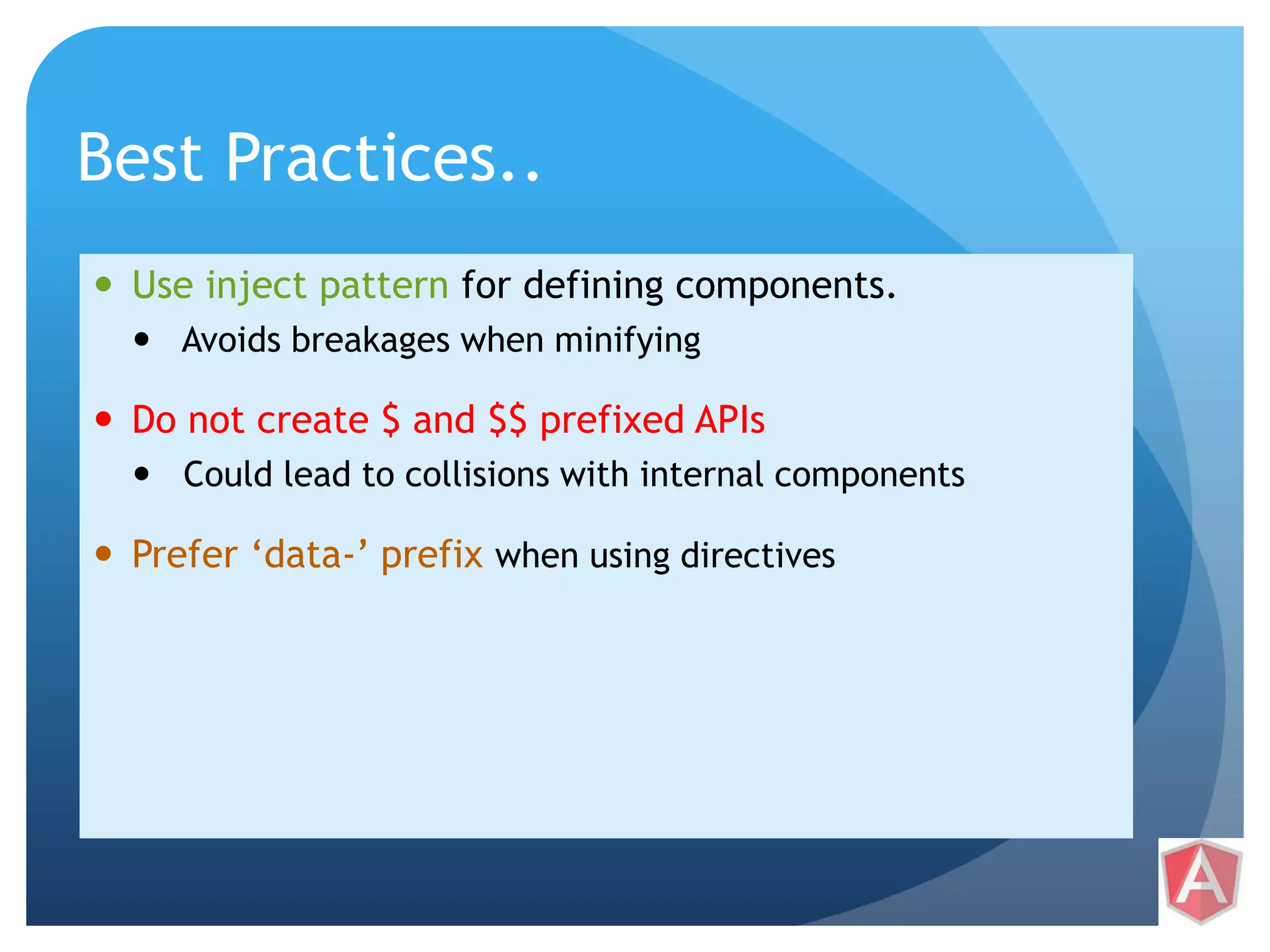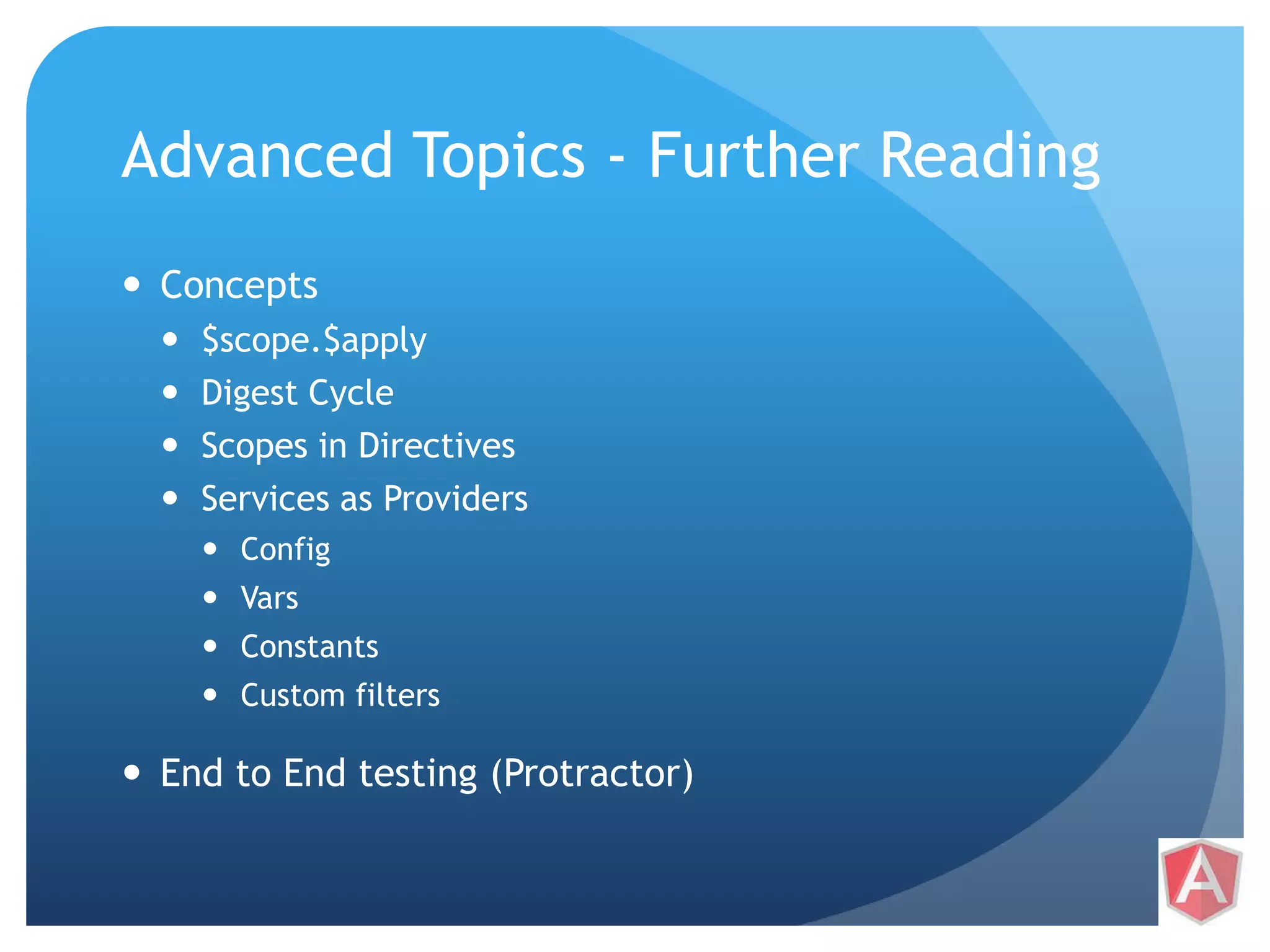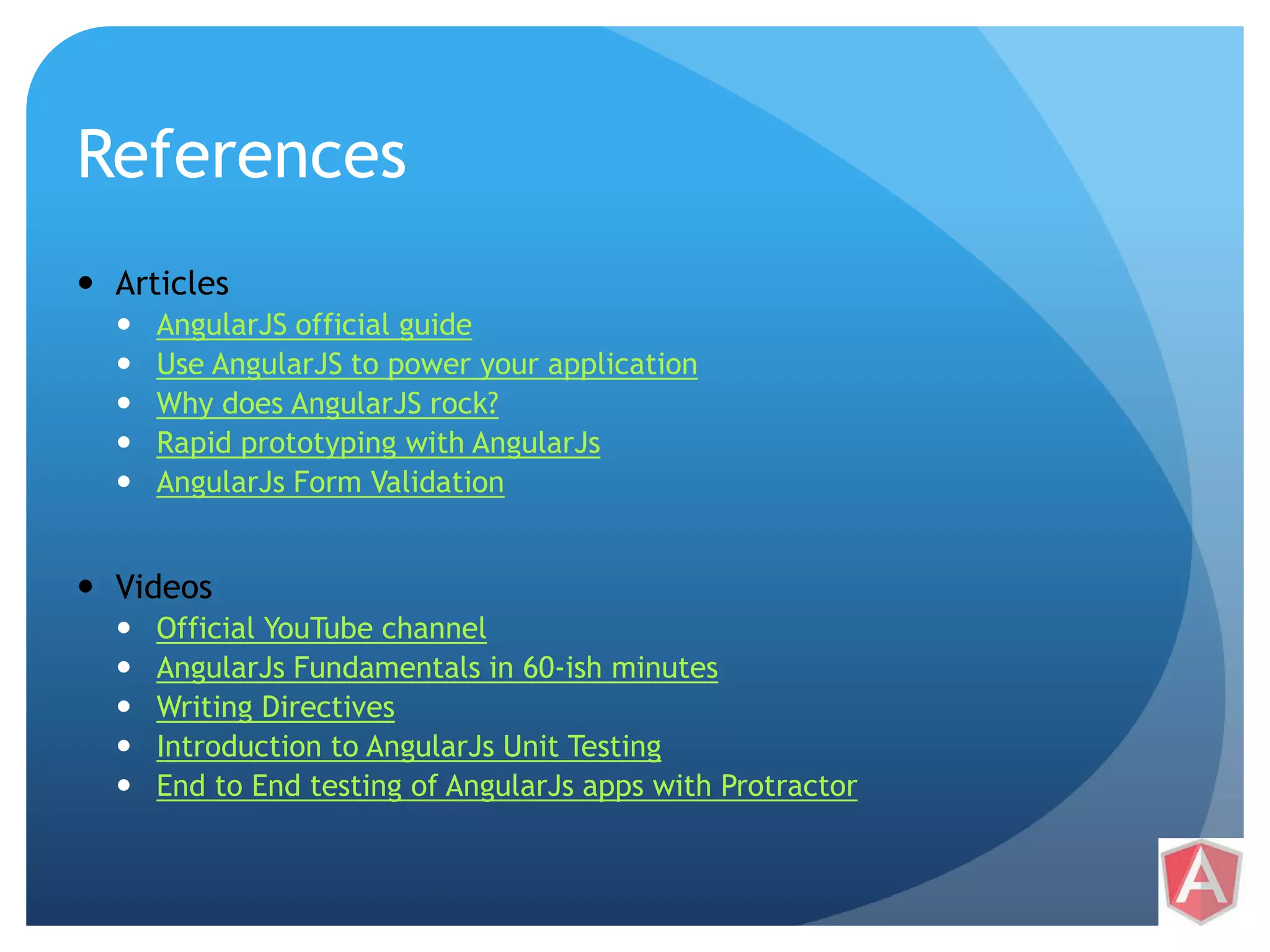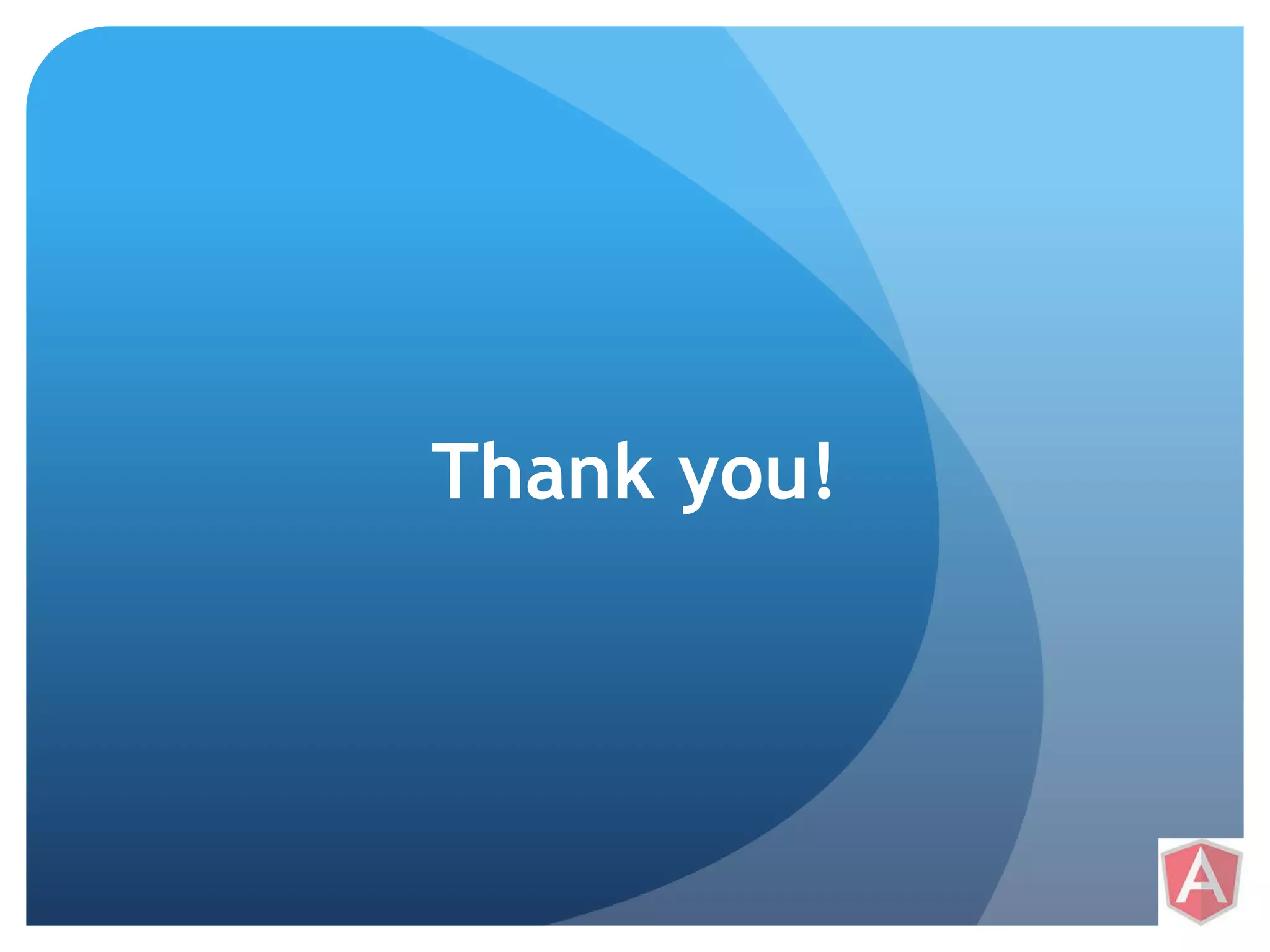The document outlines the agenda for a Day 3 session focused on AngularJS, covering topics such as custom directives, data loading/saving with $http and $resource, and application setup with AngularJS seed and Yeoman. It includes best practices for unit testing, creating directives, and optimizing performance, along with further reading materials on advanced topics. Additionally, it discusses key concepts such as the compilation phase, data sharing, and provides code examples for implementing directives and making HTTP requests.
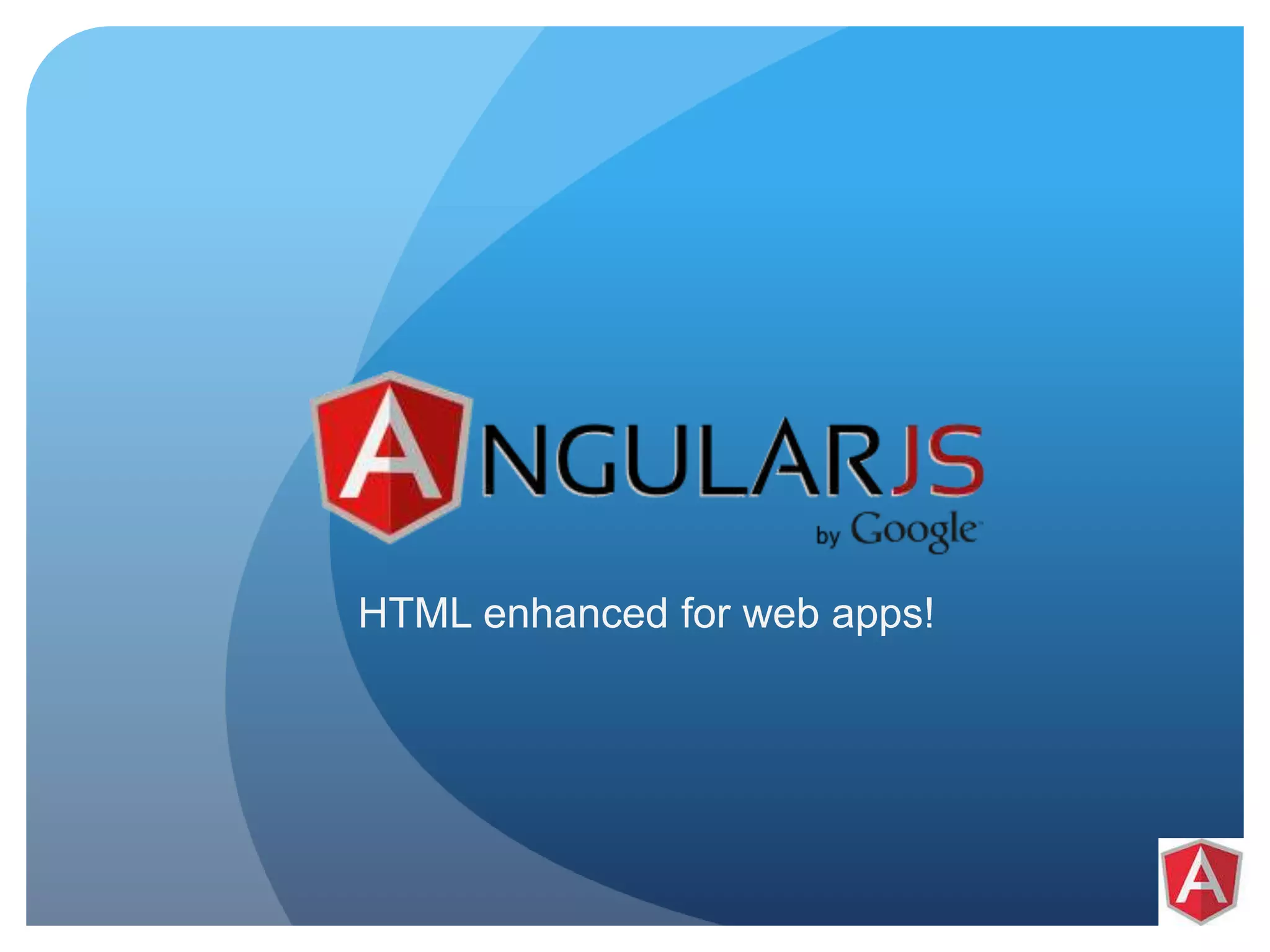
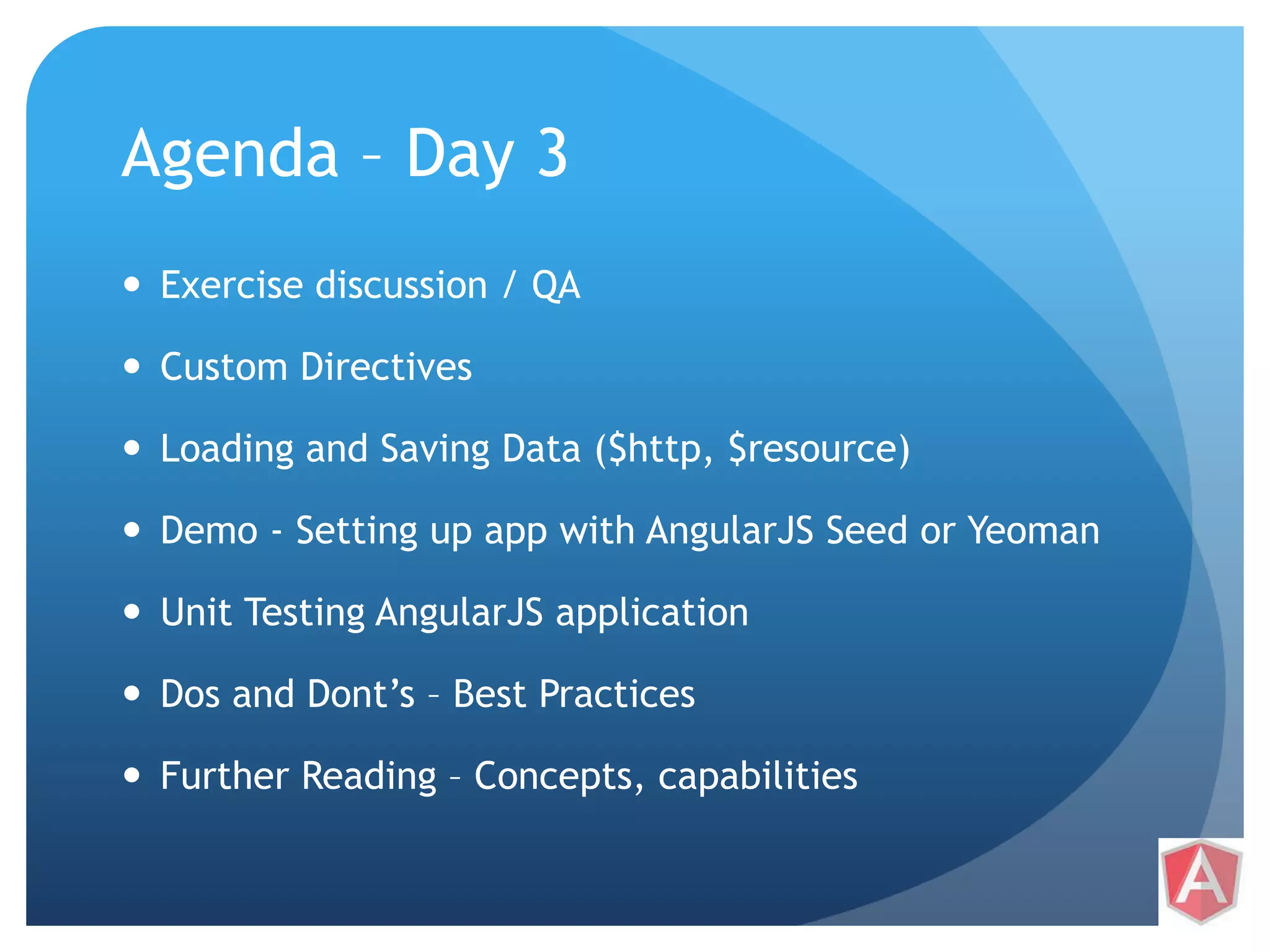
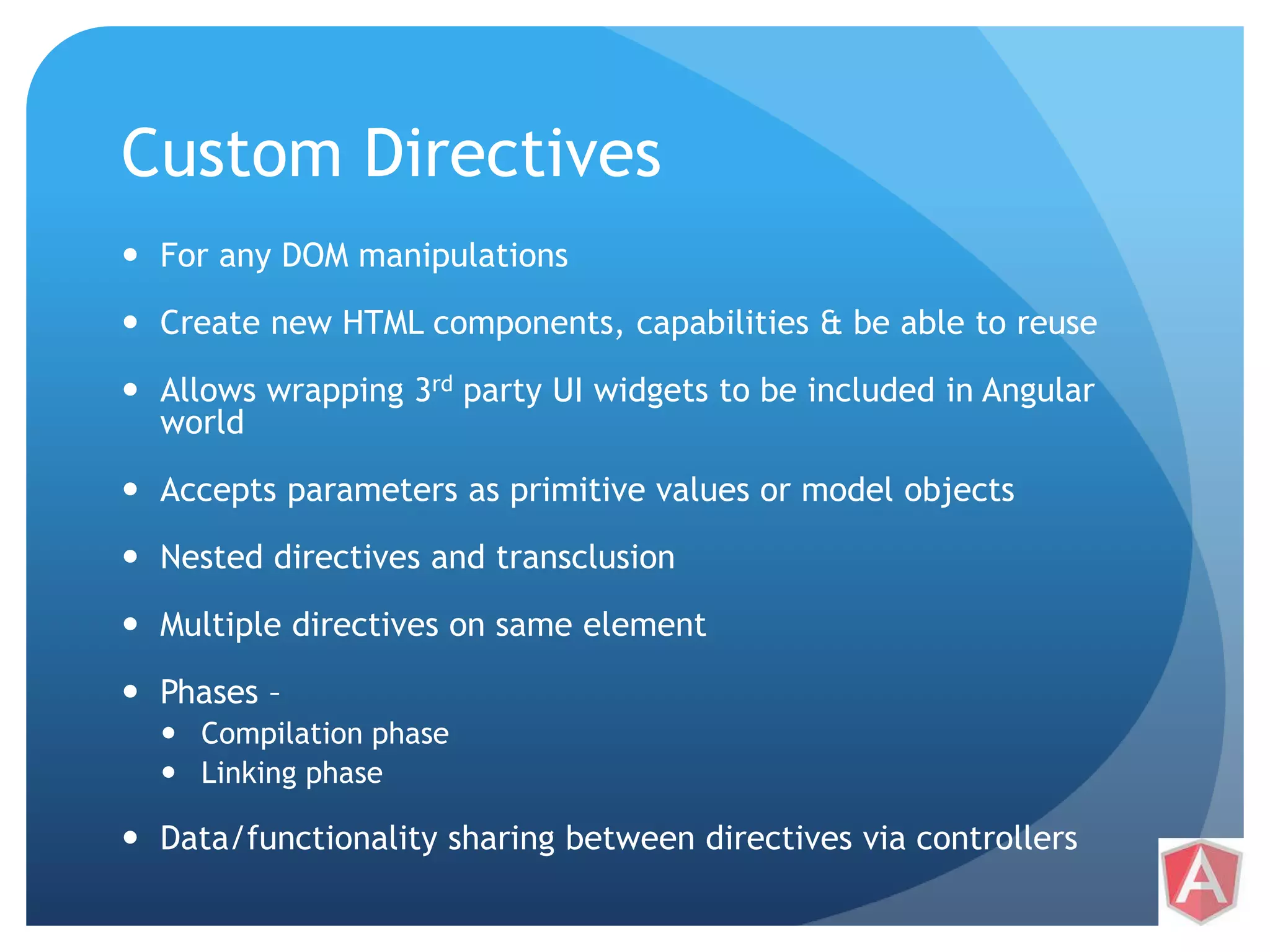
![Custom Directives <my-directive attribute=“some attribute” ..> angular.module('myModule', []). directive('myDirective', function() { return { restrict: 'A', // < E | A | C | M > template: '<div>...some more markup...</div>', templateUrl: 'my-directive-template.html', replace: false, transclude: true, // < false | true > scope: { // < true | false | {} > 'localFoo': '@foo' // < @ | @attribute> 'localBar': '=info' // < = | =attribute | =? attribute> 'myProp': '&expression' // < & | &attribute > }, controller: function($scope, myDepedencies, ...) {...}, require: 'myOtherDirective' // prefix - < (no prefix) | ? | ^ | ?^ > link: function postLink(scope, iElement, iAttrs, otherController, ... ) { ... } }; }); <span>text</span> <div ng-transclude /> </my-directive>](https://image.slidesharecdn.com/angulartraining-day3-customdirectiveshttpresourcesetupwithyeomanunittestingbestpractices-141128065040-conversion-gate01/75/Angular-training-Day-3-custom-directives-http-resource-setup-with-yeoman-unit-testing-best-practices-4-2048.jpg)
